Shaping Metal with Heat and a Hammer |
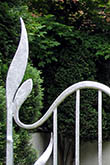 |
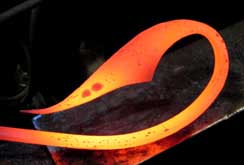 |
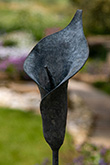 |
Unlike most fabricators, who buy and use mass produced off-the-shelf components, Verdigris' blacksmith David Hyde forges all of his work from raw materials; usually steel, though other metals are used. First they are heated in a forge, then beaten to shape with well aimed hammer blows. A variety of specially shaped blacksmith's hammers, and other tools, are used to control how the metal moves when hit. These blows give forged steel a rich natural texture, and an elegant sculptural quality unseen in mass produced work. Some stages in this process are illustrated below.
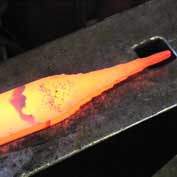
The forging starts by heating a wide strip of steel. This is tapered to a blunt point using a power hammer which forms a series of steps as the taper is roughed out.
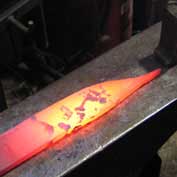
Softer blows with a hand hammer smooth out the steps and move the taper off to one side.
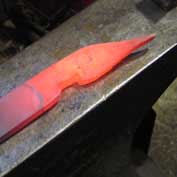
A notch is formed just behind the evolving shape by fullering the steel. This helps to isolate and preserve the previous work as the stem of the shape is forged.
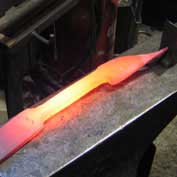
Heavy blows from the power hammer quickly thin the bar to start forming the stem. By now the embryonic shape can be seen on the end of the bar.
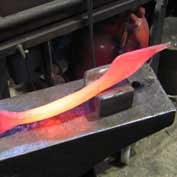
Careful hammering widens the stem. This is blended into the end section, helping to define it more.
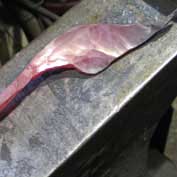
Now the end is worked by hand hammering again. Note the texture, which is sometimes left as is. However, for this work it will be smoothed out by rapid soft blows; a process known as planishing.
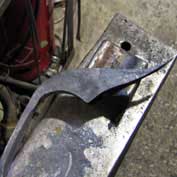
Planishing takes place at a dull red heat to prevent the blows marring the work. The steel is now almost cool and the finished shape can be seen.